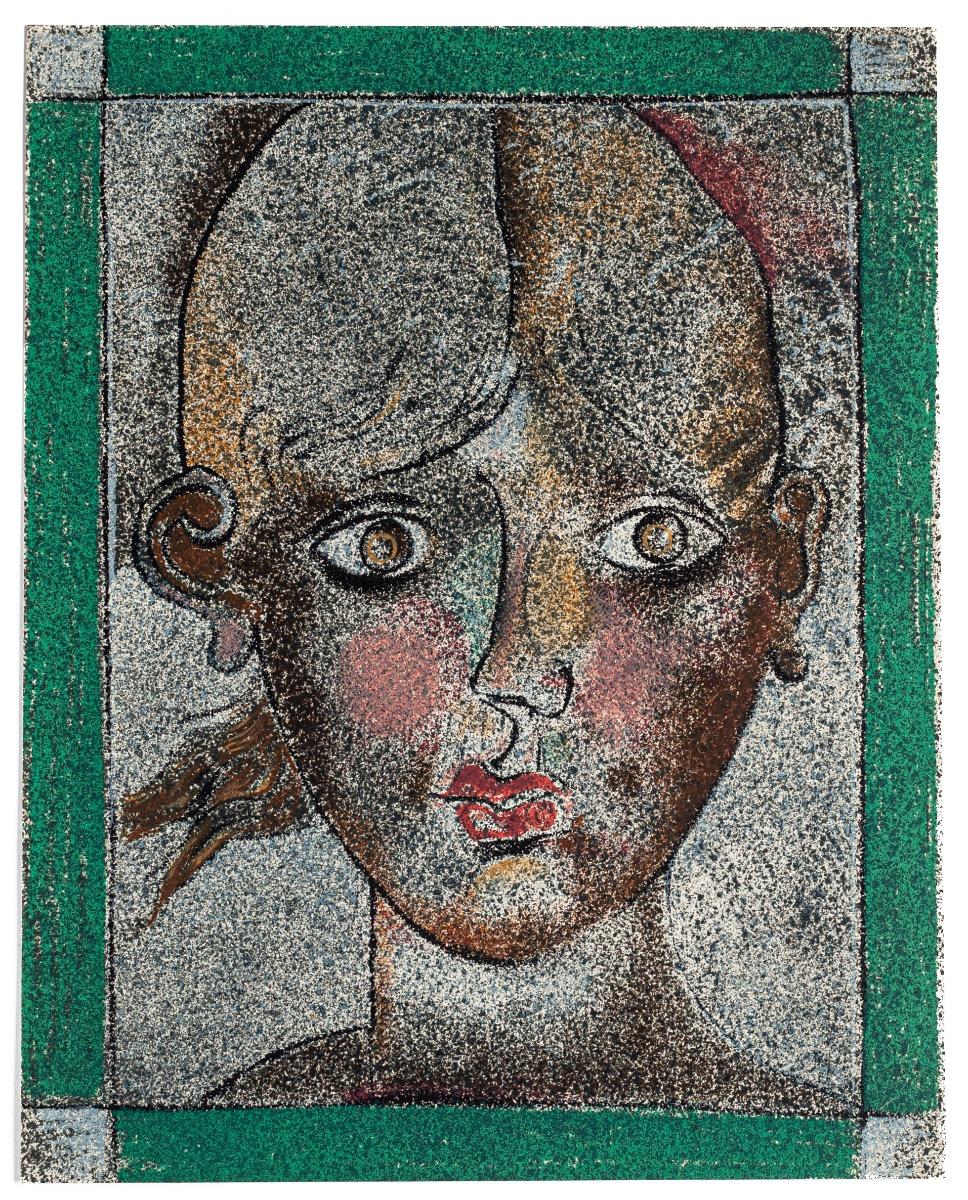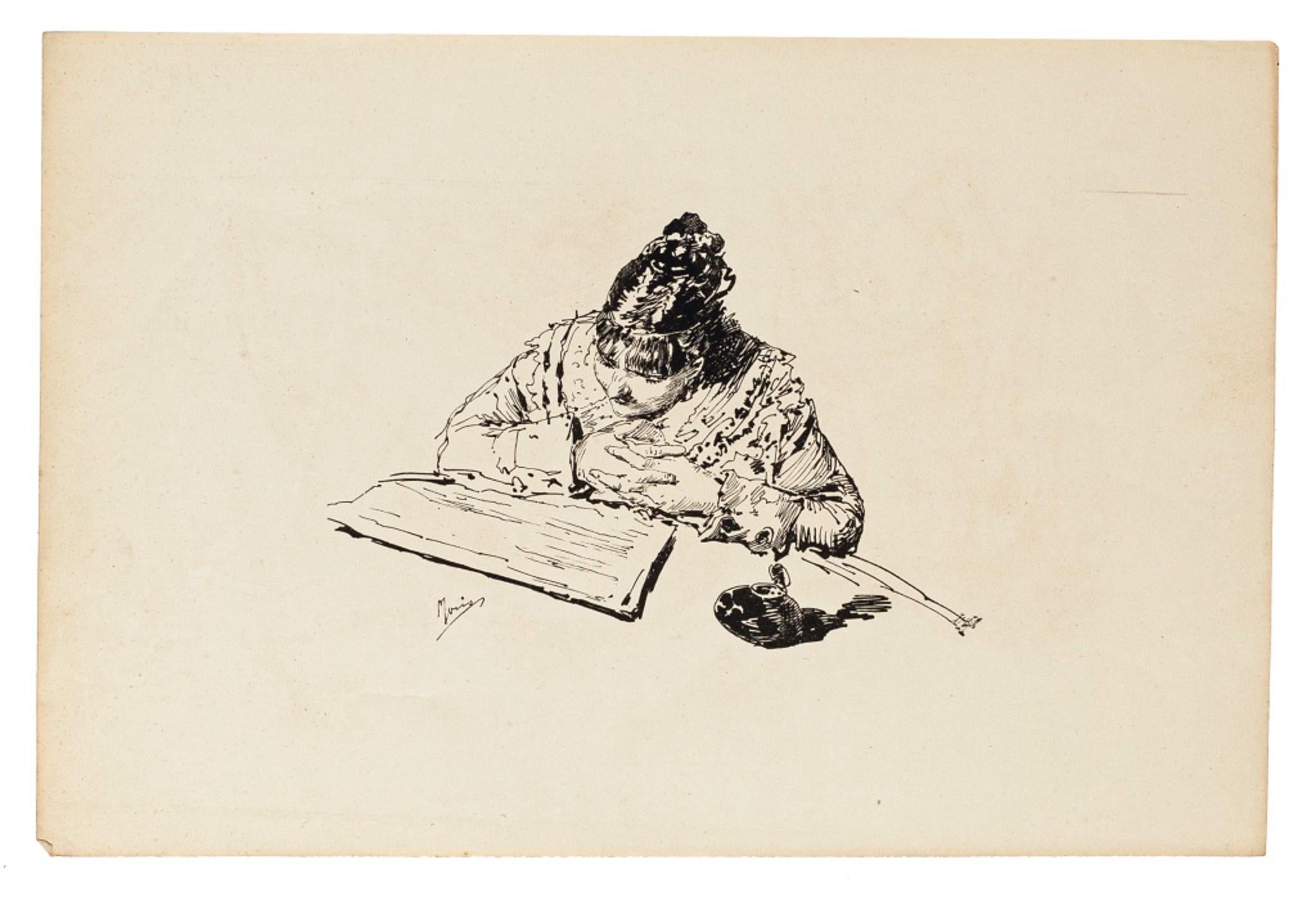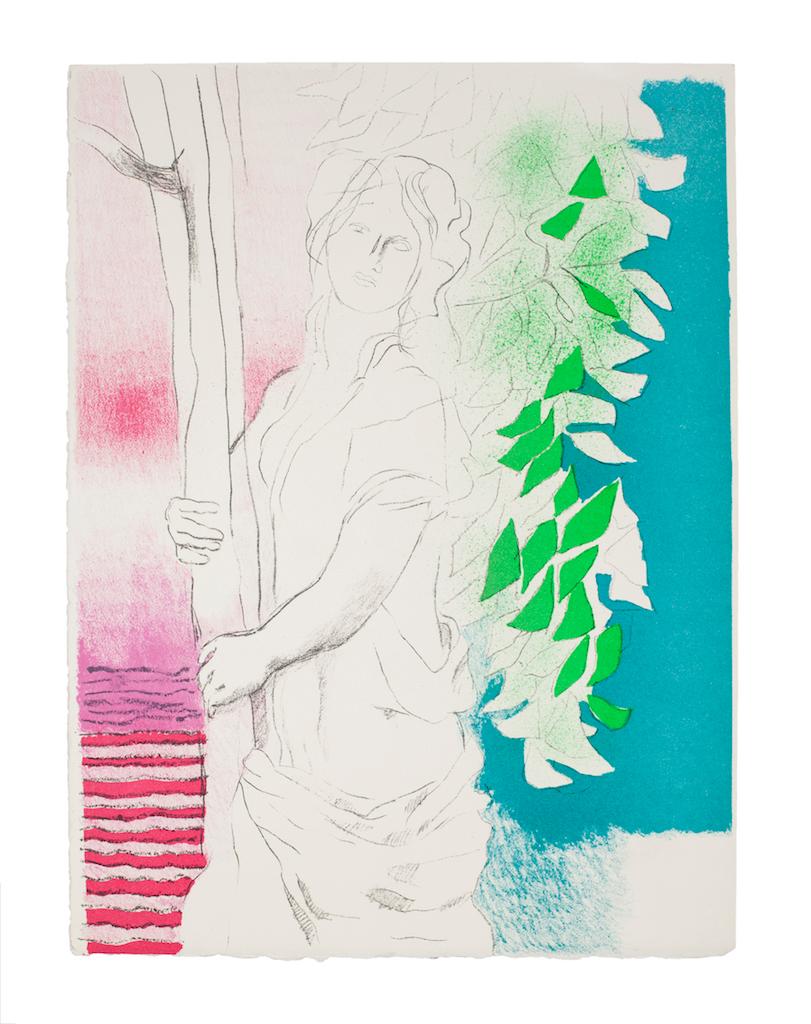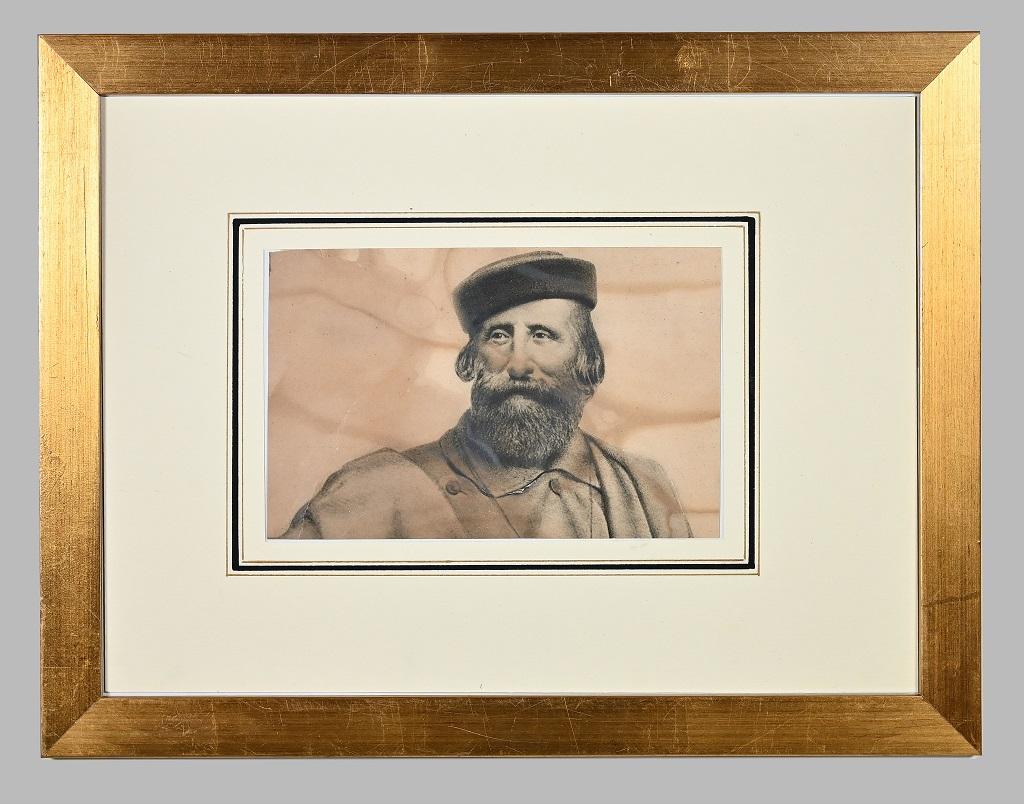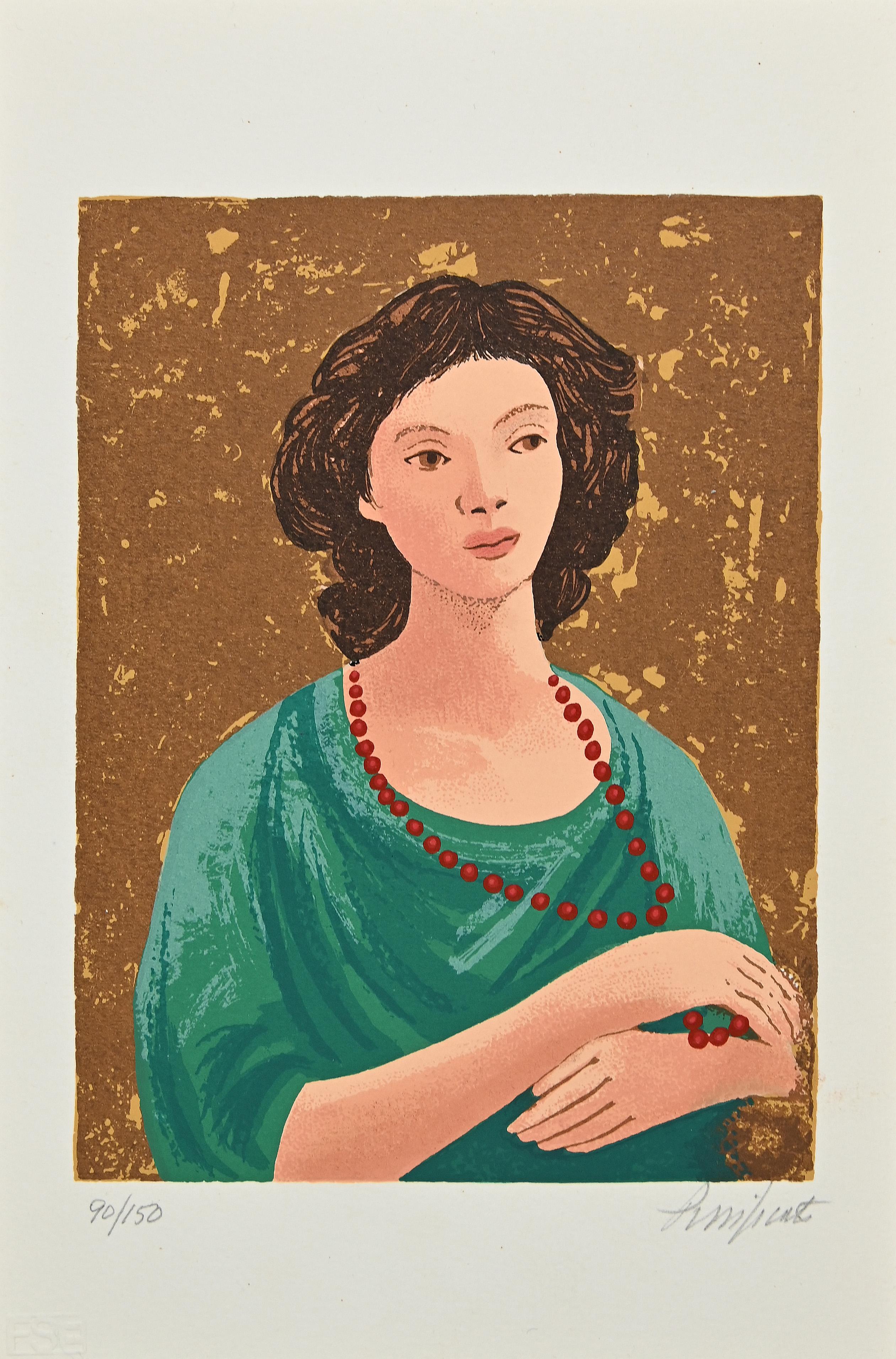William GropperJewish Shtetl Peddlar Americana Judaica Lithograph WPA Yiddish Social Realist
About the Item
- Creator:William Gropper (1897 - 1977, American)
- Dimensions:Height: 14 in (35.56 cm)Width: 11 in (27.94 cm)
- Medium:
- Movement & Style:
- Period:
- Condition:good. minor wear commensurate with age. this was never framed and is being sold unframed.
- Gallery Location:Surfside, FL
- Reference Number:
William Gropper
William Gropper was a painter and cartoonist who, with caricature style, focused on social concerns. Gropper was born on December 3, 1897, in New York. William Gropper was a student of Robert Henri and George Bellows at the Ferrer School from 1912–15. During the 1930s, working as a part of the Federal Arts Project, he produced some of the most gripping social protest works of the Great Depression. His subjects included industrial strikes, especially in coal mining and steel-production centers. Gropper did much illustration-cartoon work for the New York Tribune newspaper, Vanity Fair magazine and the politically left-wing publication, New Masses. Some of his other pieces focused on the hypocrisy of government figures, especially members of the United States Senate. Gropper died on January 6, 1977, in Manhasset.
- ShippingRetrieving quote...Ships From: Surfside, FL
- Return PolicyA return for this item may be initiated within 3 days of delivery.
- French Armenian Jean Jansem Lithograph Mod Woman in Orange Hand Signed ModernistBy Jean JansemLocated in Surfside, FLHand signed in pencil and numbered from the limited original edition. Jean Jansem (Hovhannes Semerdjian) 1920-2013 Bursa, Ottoman Turkish Empire Hovhannes "Jean" Semerdjian (Armenian: Հովհաննես "Ժանսեմ" Միրիջանի Սեմերջյան, 9 March 1920 – 27 August 2013), also known as Jean Jansem, was a French-Armenian painter. Jansem's artworks are internationally known, and are part of museum collections throughout France, Japan and the United States. A Foreign member of the National Academy of Sciences of Armenia (2002). He was awarded by the Ordre des Arts et des Lettres in 1953 and by the Knight of the French Legion of Honour in 2003. The President of Armenia awarded Jansem a Medal of Honor for his “reinforcement of Armenian-French cultural ties.” Hovhannes Semerdjian was born in 1920 in Bursa, then in the Ottoman Empire. In 1922, his family fled to Greece. He spent his childhood in Thessaloniki. They arrived to Issy-les-Moulineaux suburb of Paris, France in 1931 when he was 11 and that is when he begin to paint. The first professional schools for Jansem became the academies of Montparnasse (1934–1936). He studied in the Ecole des Arts Decoratifs. His teachers were Maurice Brianchon, Raymond Legueult and Roland Oudot. Jansem also studied at the Sabatie studio for a year. Early paintings by Jansem were mainly on national issues. Known for his washy representational paintings of figure, landscape, marine and genre scenes of European subjects: fishermen and children of Greece, bullfighting in Spain, Italian landscapes and markets, scenes of Venice and French France village marketplaces and landscapes, nude women, still lifes, and figures, Jansem painted with a variety of media that included gouache, watercolor, ink, and oil painting in a stylized and textural aesthetic. had individual exhibitions in Paris, New York, Chicago, London, Tokyo, Rome, Brussels, Lausanne, Beirut etc. His work was shown by the prominent Wally Findlay Galleries in New York, Paris, Palm Beach and Beverly Hills (they show many important artists including Gaston Sebire, Henri Maik, Gen Paul, Jean Pierre Cassigneul, Jean Dufy, Gustavo Novoa, Nicola Simbari, Dietz Edzard, Suzanne Eisendieck, Constantin Kluge, Louis Valtat, Michael Vollbracht...Category
1960s Modern Figurative Prints
MaterialsLithograph
- Jewish Shtetl Hasidic Wedding Dance Judaica Lithograph Yiddish Social RealismBy William GropperLocated in Surfside, FLHand signed in pencil and numbered with Roman numerals 8/24. A very small edition. Old Lower East Side of New York or East European Shtetl. Jewish Shtetl Hasidic Klezmer Musicians. ...Category
Mid-20th Century Modern Figurative Prints
MaterialsLithograph
- Jewish Shtetl Klezmer Wedding Tanz Judaica Lithograph WPA Yiddish Social RealistBy William GropperLocated in Surfside, FLHand signed in pencil and numbered with Roman numerals 8/24. A very small edition. Old Lower East Side of New York or East European Shtetl. Jewish Shtetl Klezmer Musicians. humorous...Category
Mid-20th Century Modern Figurative Prints
MaterialsLithograph
- Portrait Woman Original French Mourlot Modernist Lithograph 1951 Francoise GilotBy Françoise GilotLocated in Surfside, FLRare vintage limited edition Stone Lithograph printed at Mourlot in Paris. this is from a signed and numbered portfolio but the individual sheets are not hand signed and numbered. Francois Gilot, (1921-) studied English Literature at Cambridge University, and then, encouraged by her father, studied international law, though she secretly also took art lessons at the same time. In 1943, during her first exhibition in Paris, Gilot (then 21) met Pablo Picasso (who was 61) for the first time. In 1946, Gilot started a 10-year relationship with the notorious womanizer and had two of his children,Claude and Paloma. As a result of her relationship with Picasso, Gilot "became both a witness and a participant in one of the last great periods of the modern art movement in Europe. Their circle included poets, philosophers, writers, and many of the legends of the art world, such as Braque, Chagall, Cocteau and Matisse. In 1953, Gilot left Picasso and the home they shared in Vallauris and moved back to Paris. "Lithographs are printed from stones and each stone is an echo of my artistic voice," said Gilot. "Many artists use their art as a personal catharsis. I have never done that. I am more intellectual. Each artistic process -- oils, lithographs, monotypes -- allows me a different freedom and suits a different mood." While Gilot did her first lithograph in 1950 at the Mourlot Atelier, the same studio used by Picasso, Henri Matisse, Marc Chagall, Jean Miro and Jean Dubuffet, it was in the 1970s that she really began to experiment with the process. "In the beginning I turned to lithography because I wanted to show off my technical skills. Now I am more interested in color," said Gilot. "I also thought that lithographs would make my works more accessible to young collectors." While her oils are priced up to $100,000, her lithographs begin at $2,000 and her monotypes range from $1,000 to $2,500. HONORS Officier de la Legion d'Honneur, Presidence de la Republique, France Chevalier de la Legion d'Honneur, Ministere de la Culture, France SELECTED MUSEUM COLLECTIONS Metropolitan Museum of Art, New York Musee d'Art Moderne, Paris Musee Picasso, Antibes, France National Acadamy of Design, New York Musee de Tel Aviv, Tel Aviv, Israel Museum of Modern Art, New York Bibliotheque Nationale, Paris (complete collection of original prints) SELECTED IMPORTANT EXHIBITION CATALOGUES 2012 Françoise Gilot, Paris - Vallauris, 1943 - 1953, The Gagosian Gallery, New York Essays: John Richardson, Françoise Gilot, Charles Stuckey and Michael Cory 2011 Françoise Gilot, at 90, Drawings 1941 - 2010, Kunstsammlungen Chemnitz, Germany Essays: Françoise Gilot and Louise Tolliver Deutschman (exhibition curator) 2006 Françoise Gilot, Portraits From a Life, The Elkon Gallery Inc., New York 2003 Françoise Gilot Painting...Category
1950s Modern Portrait Prints
MaterialsLithograph
- Jewish Shtetl Mother-in-law Klezmer Wedding Dance Judaica Lithograph Yiddish WPABy William GropperLocated in Surfside, FLHand signed in pencil and numbered. A very small edition. Old Lower East Side of New York or East European Shtetl. Jewish Shtetl Hasidic Klezmer Musicians. humorous Yiddish Chassidic art. The New-York born artist William Gropper was a painter and cartoonist who, with caricature style, focused on social concerns, and was actively engaged in support of the organized labor movement throughout his career. This original color lithograph print is done in the iconic style of the artist's oeuvre. Born to Harry and Jenny Gropper in 1897, William was raised in New York City's Lower East Side. His parents were Jewish immigrants from Romania and Ukraine, and young William grew up in relative poverty, watching his family struggle to achieve that sought-after American dream. His father, a bright and college-educated man, was unable to find employment that worthy of his intellect. His mother, meanwhile, worked as a seamstress from home. Coupled with the devastating loss of an aunt to the infamous Triangle Factory fire of 1911, significant childhood factors created the foundation that led to Gropper’s exploration of the American experience. Early on, Gropper displayed an extraordinary, natural skill for art. By 1912, he was already studying under the instruction of George Bellows and Robert Henri at the Ferrer School in Greenwich Village. During his time at school, Gropper was also awarded a prestigious scholarship to study at the National Academy of Design. However, he refused to fit into convention and was swiftly expelled from the Academy. After his expulsion, Gropper returned home to help financially by assisting his mother and taking a shop position. However, he didn't abandon art academia and soon presented a portfolio to the New York School of Fine Art which earned him a scholarship for study. Gropper obtained his first significant job as a cartoonist for the New York Tribune in 1917. While working as a staff cartoonist for the Tribune, he also contributed drawings to publications like Vanity Fair, New Masses, The Nation, and Freiheit. His interest in the welfare of the American worker, class inequality, and social injustice was central in his work. After publishing the graphic novel Alley Oop in 1930, Gropper's illustration career extended well into the decade. However, he was never exempt from controversy, and his 1935 Vanity Fair cartoon; prompted anger from the Japanese government. As an involved labor organizer and Social Realist activist, Gropper continued to bring attention to his radical reputation with visits to the Soviet Union and Poland. However, his concern with European politics and U.S. social causes didn't slow down his artistic career, and by the late 1930s, he had produced significant murals for American cities like Washington D.C. His 1938 mural Construction of a Dam was commissioned for the Department of the Interior and represents the Social-Realism style that depicts experiences of the worker and everyday societal life. Measuring at a staggering 27ft by 87ft, the piece portrays muscular, robust American laborers scaling rocky hillsides, building infrastructure, and operating heavy machinery. The mural feels undeniably American with golden scenery, denim blues, and steely gray colors. Gropper fits perfectly into Social-Realism because the style exhibits an illustrative flair with strong lines and simple, bold hues. The inspiration for Construction of a Dam sprang from his 1937 travels to the poverty-stricken Dust Bowl area. The trip was sponsored by a Guggenheim Foundation Fellowship, and his drawings of the Grand Coulee and Boulder Dams...Category
Mid-20th Century Modern Figurative Prints
MaterialsLithograph
- Hiding Head Original French Mourlot Modernist Lithograph, 1950s Francois GilotBy Françoise GilotLocated in Surfside, FLFrancois Gilot, (1921-) studied English Literature at Cambridge University, and then, encouraged by her father, studied international law, though she secretly also took art lessons a...Category
1950s Modern Portrait Prints
MaterialsLithograph
- Portrait of Woman - Lithograph on Paper by Franco Gentilini - 20th CenturyBy Franco GentiliniLocated in Roma, ITWoman's Face is a lithograph realized by Franco Gentilini Perfect conditions. The artwork represents a face of woman in a greenish frame through soft a...Category
1970s Modern Figurative Prints
MaterialsLithograph
- The Reading - Lithograph - 1880By Pio JorisLocated in Roma, ITThe reading is a beautiful artwork realized by Pio Joris realized in 1880. Litograph. In very good condition. Signature on the lower side margin of the artwork is printed. Pio Jo...Category
1880s Modern Figurative Prints
MaterialsLithograph
- Woman - Lithograph - 1970sBy Paul GuiramandLocated in Roma, ITWoman is original lithograph artwork on paper, realized by Paul Guiramand. The state of preservation of the artwork is very good. The artwork represents a standing woman surrounded...Category
1970s Modern Portrait Prints
MaterialsLithograph
- Giuseppe Garibaldi - Lithograph - Late 19th CenturyLocated in Roma, ITPortrait of Garibaldi is an original Modern Artwork realized in the Second Half of the 19th Century by an Anonymous artist. Lithograph on paper. Browing of paper due to the time a...Category
Mid-19th Century Modern Figurative Prints
MaterialsLithograph
- Margherita - Lithograph - 1881Located in Roma, ITMargherita is an original hand-colored lithograph on paper realized in 1881 by an anonymous artist of the 19th Century. Titled at the bottom and dated on plate. The state of preser...Category
1880s Modern Figurative Prints
MaterialsLithograph, Paper
- Portrait - Lithograph by Domenico Purificato - Early 20th CenturyLocated in Roma, ITPortrait is an original lithograph realized by the italian artist Domenico Purificato. Hand-signed on the lower right. Numbered. edition of 90/15...Category
1970s Modern Portrait Prints
MaterialsLithograph
